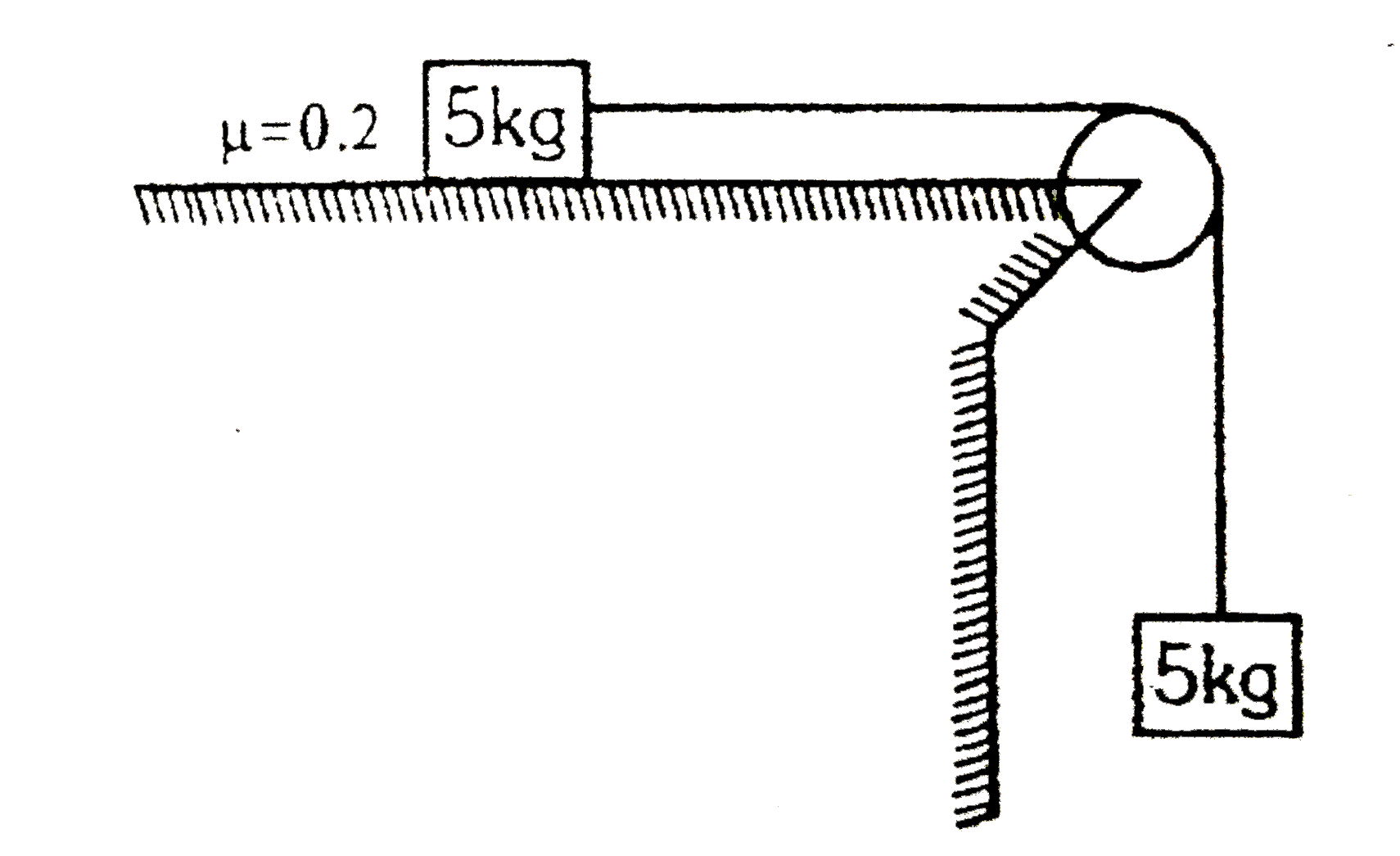Consider a system of two identical masses. One is dropped from a height and another is thrown from ground with speed u.The acceleration of centre of mass of the system at time t is
g2
g
2g
Zero
To find the acceleration of the center of mass of the system consisting of two identical masses, we can follow these steps:
Step 1: Define the System
Let the two identical masses be m. One mass is dropped from a height H and the other is thrown upwards from the ground with an initial speed u.
Step 2: Analyze the Forces
Both masses experience the force of gravity acting downward. The gravitational force on each mass is mg, where g is the acceleration due to gravity.
Step 3: Determine the Accelerations
Since both masses are acted upon by the same gravitational force, their accelerations can be defined as:
- The mass that is dropped (let's call it m1) has an acceleration a1=g (downward).
- The mass that is thrown upwards (let's call it m2) also experiences the same gravitational acceleration a2=g (downward), despite being initially thrown upwards.
Step 4: Calculate the Acceleration of the Center of Mass
The acceleration of the center of mass acm of the system can be calculated using the formula:
acm=m1⋅a1+m2⋅a2m1+m2
Substituting the values:
- m1=m
- m2=m
- a1=g
- a2=g
We get:
acm=m⋅g+m⋅gm+m
Step 5: Simplify the Expression
This simplifies to:
acm=mg+mg2m=2mg2m
Step 6: Final Result
After canceling out the common terms, we find:
acm=g
Thus, the acceleration of the center of mass of the system at time t is g.
Conclusion
The correct answer is option 2: g.
---
Let the two identical masses be m. One mass is dropped from a height H and the other is thrown upwards from the ground with an initial speed u.
Both masses experience the force of gravity acting downward. The gravitational force on each mass is mg, where g is the acceleration due to gravity.
Since both masses are acted upon by the same gravitational force, their accelerations can be defined as:
- The mass that is dropped (let's call it m1) has an acceleration a1=g (downward).
- The mass that is thrown upwards (let's call it m2) also experiences the same gravitational acceleration a2=g (downward), despite being initially thrown upwards.
The acceleration of the center of mass acm of the system can be calculated using the formula:
acm=m1⋅a1+m2⋅a2m1+m2
- m1=m
- m2=m
- a1=g
- a2=g
acm=m⋅g+m⋅gm+m
This simplifies to:
acm=mg+mg2m=2mg2m
After canceling out the common terms, we find:
acm=g
The correct answer is option 2: g.
Similar Questions
Consider a system of two identical masses.One is dropped from a height and another is thrown from ground with speed mu. The acceleration of the center of mass of the system at time t is
View SolutionThe magnitude of acceleration of centre of mass of the system is

View SolutionConsider a system of two identical particles. One of the particles is at rest and the other has an acceleration. The centre of mass has an acceleration.
View SolutionA stone is dropped from a height h. simultaneously, another stone is thrown up from the ground which reaches a height 4h. The two stones will cross each other after time:-
View SolutionA particle (A) is dropped from a height and another particles (B) is thrown into horizontal direction with speed of 5m/s sec from the same height. The correct statement is
View SolutionIf two particles of masses m1 and m2 are projected vertically upwards with speed v1 and v2, then the acceleration of the centre of mass of the system is
View SolutionThe position Vectors of two identical particles with respect to the origin in the three-dimensional coordinator system are r1andr2 The position of the centre of mass of the system is given by
View SolutionA ball of mass m is thrown upward and another ball of same mass is thrown downward so as to move freely gravity. The acceleration of centre of mass is
View SolutionTwo balls of different masses are thrown in air with different velocities. While they are in air acceleration of centre of mass of the system. (neglect air resistance)?
View SolutionA particle of mass m is thrown horizontally from the top of a tower and anoher particle of mass 2m is thrown vertically upward. The acceleration of centre of mass is
View Solution
